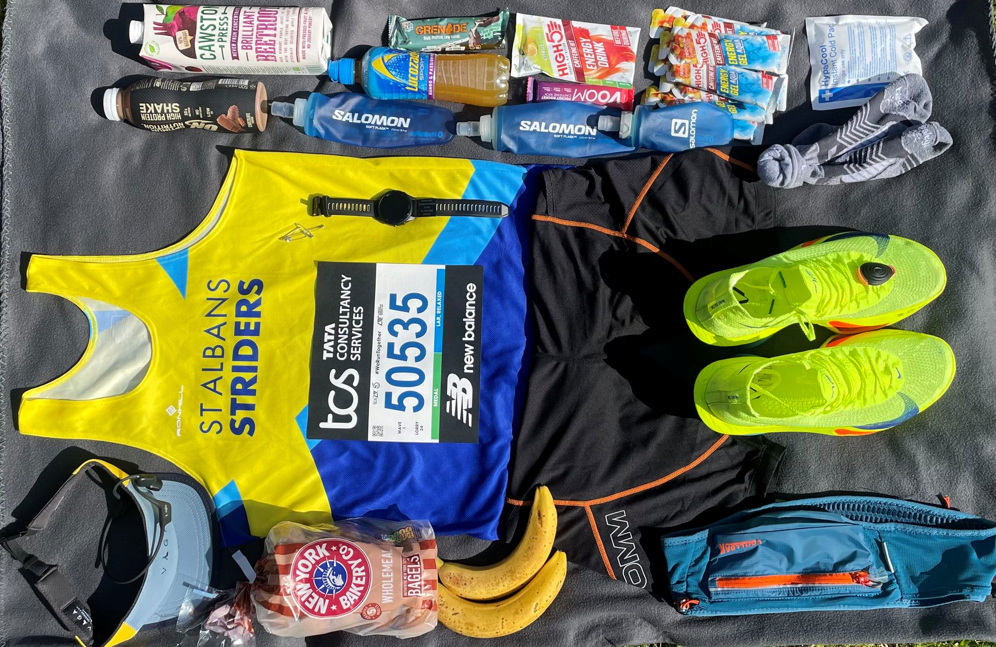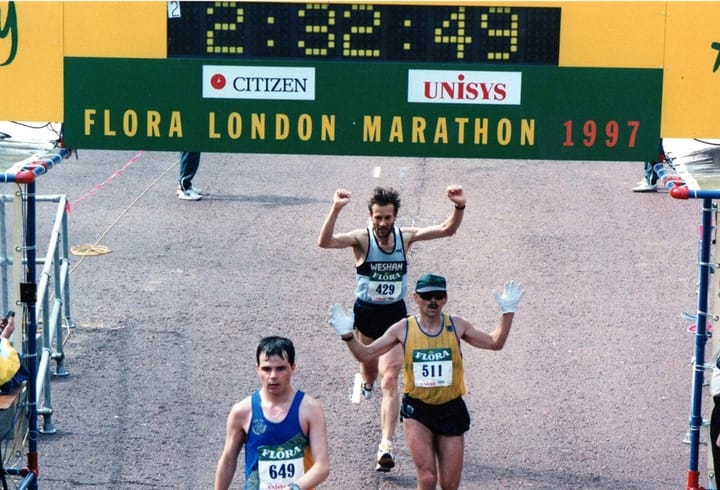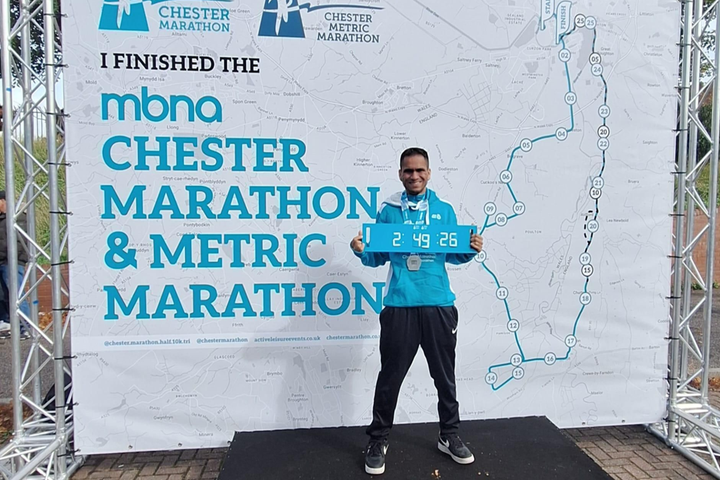Inside my race day layout for the 2025 London Marathon
Laid out the night before, tested over years of racing. This is everything I used to run 2:45 at the 2025 London Marathon, down to the last soft flask and sock.

There’s something about the London Marathon that makes people care. I’ve run plenty of races where no one’s batted an eyelid, but London sparks the public imagination, especially if you’re running for charity. So the layout you see here, taken at home the day before the 2025 race, served two purposes. One: a practical check that I had everything I needed. Two: a final push for sponsors on social media.
It’s become a tradition. I lay out the full kit in one place, double-check every item and feel a certain peace set in. No nerves, no panic. I’ve done this enough times now to trust the routine.
I was lucky enough to be able to get a coach to the start with clubmates from St Albans. The downside - it picks you up at 6.30am and you have a long wait at Blackheath before the 9.35am gun. That means breakfast on the bus, after my usual pint of beetroot juice with creatine before leaving the house. Breakfast came around 7 to 7.30am: two bagels with peanut butter, strawberry jam and a banana. I drank a cold-filtered milky coffee and a bottle of orange Lucozade Sport.
After that it was down to simple carbs. I never race without a VOOM Pocket Rocket bar, four blocks eaten slowly over 15 to 20 minutes, and I had two High Five gels before the race: one 45 minutes out, another 15. No surprises, no experiments. This system’s been tested many times.
Choosing the right shoe was the only real decision. A week before, I did a short test loop in the park, Alphafly 1s, Vaporfly 4s, Vaporfly 3s and Alphafly 3s, scoring them with my son, who’s obsessed with rankings. The Alphafly 3s came out on top: best pop, best fit and crucially the most comfort over long distances. I wore my usual Balega Ultralight socks too, the only socks I’ve never blistered in, discovered years ago at Northern Runner in Newcastle. They’re breathable, durable and now part of every run, not just race day.
The club vest was non-negotiable. I run proudly for St Albans Striders, and while about 100 of us took part in the race, perhaps just as many were stationed across the course. Seeing familiar faces when things get hard makes a huge difference.
The shorts are OMM, no chafing ever, and I use the Camelbak belt to hold a few gels, a seed bag containing tissues and two Salomon soft flasks: a 250ml one filled with water and energy powder, and a 150ml one containing three decanted High Five gels. I don’t like dealing with wrappers mid-race. Four more gels were packed into the OMM short side pockets.
A new addition for 2025 turned out to be the most effective: emergency ice packs. You squeeze them and they go cold instantly. I cracked one at Canary Wharf, another at mile 20, and passed them between my palms. It was one of the hottest London Marathons on record, but I stayed relatively cool and didn't fade too much. This may not be for everyone, and it's essential to check if it works for you before race day and to follow instructions carefully, but it seemed to work for me.
I wore a lightweight Vaga visor, not to look the part (although it was sort of club colours) but to keep the sun off without trapping heat. It was especially useful when I poured water on my head, helping it pool and stay cool. I also ran a marathon with headphones for the first time: Shokz Open Run bone conducting headphones, which let me listen to my pre-loaded Garmin 265 playlist without blocking out the crowds. Only drawback? The battery ran out at around 2.5 hours, right when I’d planned my final push soundtrack (short battery life if the volume’s up loud, which it has to be racing London).
I still wore my Stryd pod, though it’s less essential now Strava estimates power. On my watch, I kept it simple: timer, distance, pace and average pace. Through Canary Wharf, however, the latter two can wobble due to tunnels and tall buildings, even with multi-band GPS.
A couple of essential kit items missing from the layout - vaseline! And also some tissues folded into a small transparent seed bag, in case the race toilets run out of loo roll (which they have been known to do).
Once everything was packed, the prep turned quiet. I made a long checklist of tiny things I’d need to do before leaving the house at dawn. Then came another tradition: sitting down with my son to watch Chariots of Fire. The music, the races, the cinematography, it’s the perfect way to shift into race mode.
After the race, I got my kit bag back within 5 to 10 minutes and stuck to my standard recovery ritual: a high-protein shake with around 50g of protein, plus some carbs, and if I could stomach it, a peanut butter bagel. The Grenade bar was also there as a backup. Protein first, always. Solids if possible, but getting it in quickly is the main goal.
The result? A 2:45:01, my fastest marathon to date and proof that the preparation had done its job.
Enjoyed this article? Help keep Sub-3 running — support us with a coffee.
To help fund the running of the site, Sub-3 is an Amazon Associate and earns from qualifying purchases. We only recommend gear or kit that has genuinely helped in our own running and that we believe is worth considering.



